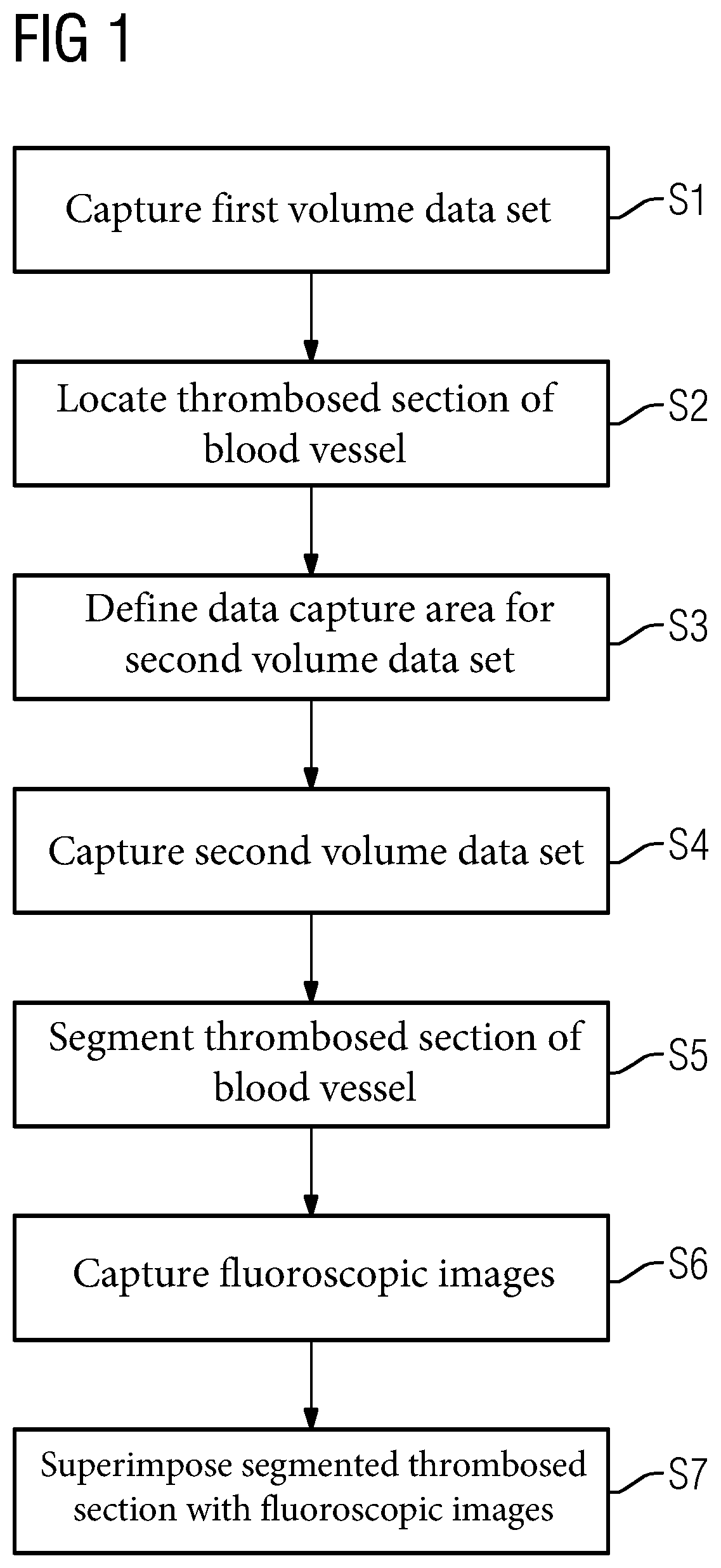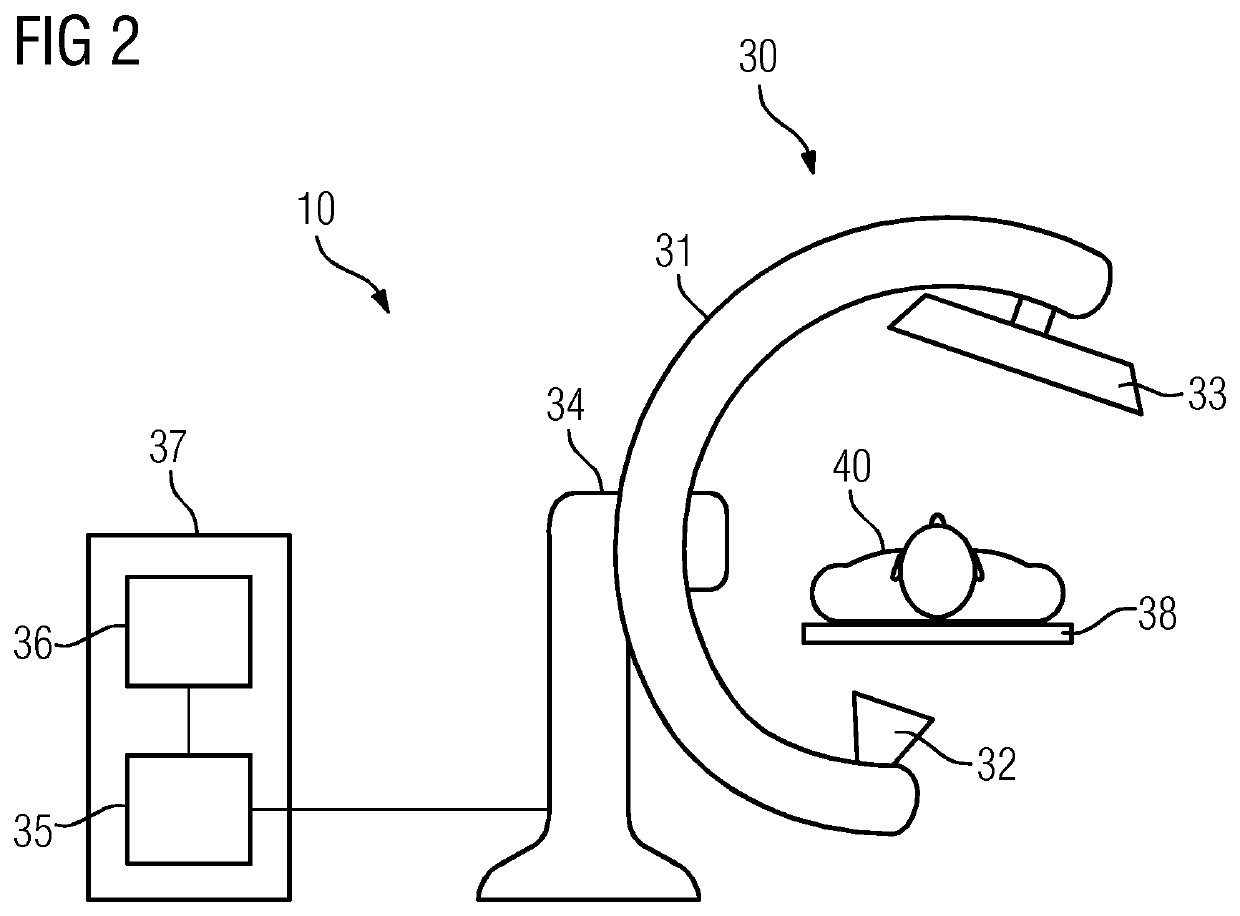Method and apparatus for visualizing a blood vessel
a blood vessel and visualization technology, applied in the field of blood vessel visualization, can solve the problems of inability to determine the position and length of the thrombosis, and the procedure is comparatively expensive and time-consuming, so as to minimize the patient's exposure to x-rays, and reduce the risk of thrombosis
- Summary
- Abstract
- Description
- Claims
- Application Information
AI Technical Summary
Benefits of technology
Problems solved by technology
Method used
Image
Examples
Embodiment Construction
[0036]The individual process acts according to an embodiment of the method are described hereinafter with the aid of FIG. 1.
[0037]In act S1 (e.g., capture of a first volume data set), a first volume data set (e.g., image data set) is first acquired (e.g., pre-interventionally). The first volume data set is used to represent a “map” of the vascular system. For this purpose, a medical acquisition device (e.g., a computer tomograph, a magnetic resonance device or a C-arm device) may be used. Contrasted projected images are captured from different projection directions and reconstructed with an image reconstruction into a spatially three-dimensional volume data set, in a basically known manner. In the volume data set, the vessels may be recognized particularly well due to the contrasting using contrast agent. The imaging may ensue using the principle of digital subtraction angiography (e.g., a “native image” is subtracted from the contrast agent-contrasted X-ray image).
[0038]Using the f...
PUM
 Login to View More
Login to View More Abstract
Description
Claims
Application Information
 Login to View More
Login to View More - R&D
- Intellectual Property
- Life Sciences
- Materials
- Tech Scout
- Unparalleled Data Quality
- Higher Quality Content
- 60% Fewer Hallucinations
Browse by: Latest US Patents, China's latest patents, Technical Efficacy Thesaurus, Application Domain, Technology Topic, Popular Technical Reports.
© 2025 PatSnap. All rights reserved.Legal|Privacy policy|Modern Slavery Act Transparency Statement|Sitemap|About US| Contact US: help@patsnap.com


